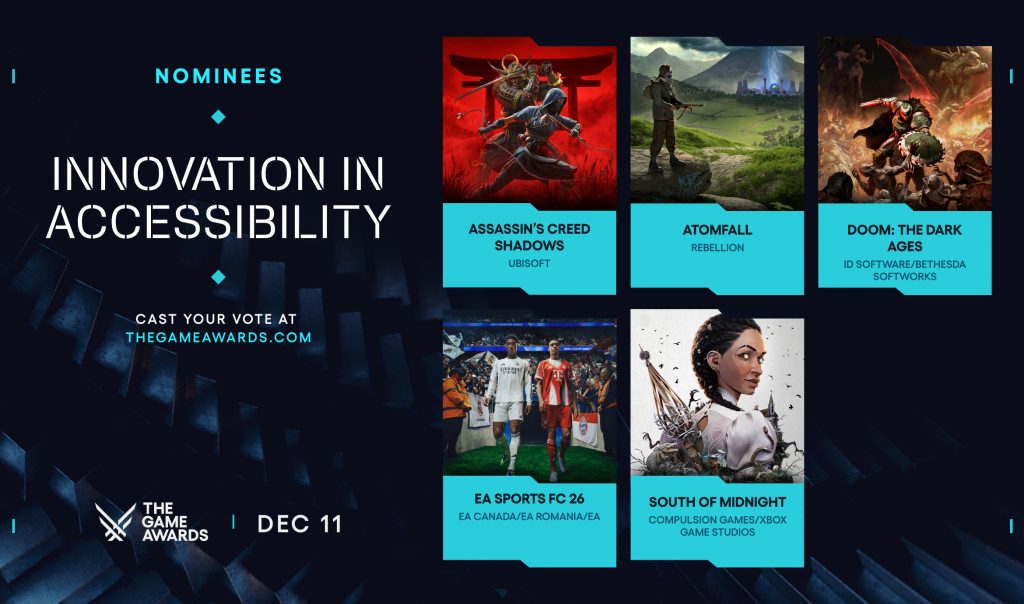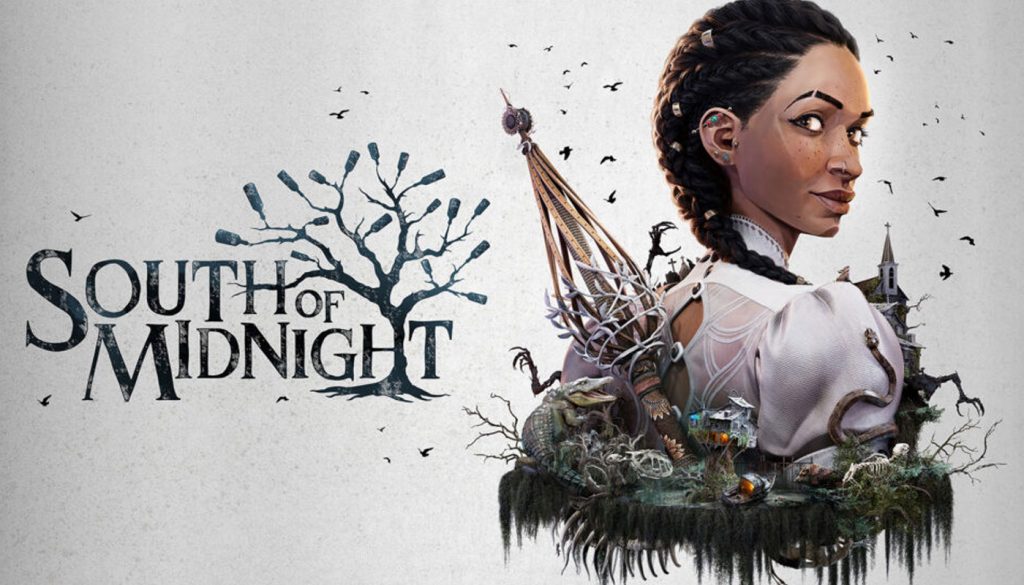
On November 18th, The Game Awards announced the nominees for 2025. In this article, we will focus on the Innovation in Accessibility Category as part of LOGNET’s Game Awards coverage. Below, we will go over what steps each nominee has taken to make their games accessible to a wider set of video game enthusiasts.
(Editor’s Note: The following information is taken from the Game Awards site)
What Is Accessibility In Gaming?
Accessibility means reducing and removing as many unnecessary barriers as possible so that everyone can enjoy video games. Each year, we recognise the innovations in accessibility — games that are pushing the boundaries of accessibility and going above the standard to include disabled players. Below are the five nominations, each excelling in its own way.
Atomfall

Atomfall is Rebellion’s most accessible game to date, built with accessibility in mind to make sure as many people as possible could access the core game experiences. Options include configurable text contrast and size (one of the only games to scale up to 52px@1080p), high contrast mode for gameplay, and optional audio cues for players with low vision – including a highly customizable audio-based FPS aiming system. By design, the game is colourblind accessible by default, uses unique and informative audio cues, and welcomes a range of players through playstyle presets and customization.
There’s a strong focus on motor accessibility with optional automation for movement, traversal, firing and reloading, Moreover, there are highly configurable melee and aim assist, and detailed remapping allowing up to four keys per action and choice for whether each should be tap Vs short hold.
Other considerations include a range of motion sickness mitigation, HUD nav assistance, detailed color customization, configurable subtitles with direction arrows, a setting to choose whether menus should pause gameplay, and more, informed by lived experience expertise from consultants and charities that worked with the team to make the game more accessible.
LOGNET covered Atomfall’s accessibility suite HERE, and Cerebral Paul gave his thoughts on the game HERE.
Doom: The Dark Ages

DOOM: The Dark Ages is designed to be approachable and accessible, allowing as many people as possible to become the DOOM Slayer and wage a medieval war against Hell. Combat & difficulty is highly configurable with a wide range of modifiers, including game speed (in fine-grained increments from 50% to 150%), enemy projectile speed, parry window, and daze duration, combined with assists like shield throw seeking, auto sprint, enhanced targeting and empowered attacks.
Visual accessibility was also a priority for id Software, with gameplay high contrast settings that allow configurable degrees of environment desaturation and color overlays. It provides individual hue & opacity options for enemy, hazard, interactable, pickup, attack, shield breakable, enemy leaders, and parryable attack. This works together with settings for parry recolour, text scale, HUD scale, high contrast HUD, pop-up magnification, and configurable reticle to create a more accessible experience for low vision players.
There’s also audio-visualisations showing direction and type of incoming attacks, cinematics intentionally designed for important sounds to originate from on-screen sources, a range of motion sickness toggles, and much more, pushing accessibility of the Doom franchise to new heights.
Read the official post from Bethesda for more information.
Assassins Creed Shadows

Assassin’s Creed: Shadows is an evolution for the franchise, with many elements being rebuilt from the ground up. The team embraced this as an opportunity to take accessibility to new levels, with franchise firsts like audio-described cinematics, powerful remapping allowing a choice of hold/press/double-press for each action, and greatly upgraded subtitles with better colour modifications, speaker directions, conversation log, and speaker emotion tone tags.
Screen narration now goes beyond menu items to cover many HUD modules and time-sensitive elements. The HUD is highly configurable, letting players toggle every element individually or through presets, and adjust opacity, size and contrast.
Stealth and combat each have four separate difficulty settings, and combat can be simplified to a single input instead of multiple buttons or complex combos. Guided and canon modes remove blockers to exploration and narrative, too, and there’s a range of extra audio cues with an audio glossary to increase independence for players with sight loss. Bringing together efforts from many Ubisoft teams around the world, all working to ensure as many people as possible are able to enjoy everything the game has to offer.
Read the official post for more information.
FC 26

FC 26 marked a step forward not just for the franchise or genre, but breaking new ground for competitive games. FC 26’s highly customizable gameplay high contrast modes (configurable colour overlay for home/away/goalkeepers/referee clothes/whole body and ball, pitch desaturation slider, player & stadium shadow toggles) are available in all game modes, including competitive PVP. The unveiling of the feature was itself innovative, with the high contrast functionality being showcased within the first reveal trailer of the game.
The game builds upon the strong motor accessibility of the series, with control customization including 1 and 2 button modes, analogue sprint, an extensive array of assists for shooting, passing, defending, switching dribbling and goalkeeping, and more. There’s also menu narration, configurable player indicator size and fade, configurable subtitles, and real-time chat transcription between text and voice.
Achieving a shift like this in a game that has a one-year release cycle is no small feat, made possible by efforts all across the studio, and informed and inspired by working directly with disabled players throughout.
Read the office post for more information.
South of Midnight

South of Midnight built upon Compulsion’s previous accessibility experience, taking it further through extensive work with disabled players to identify new possibilities and set ambitious targets. A flagship Guiding Strand feature provides a line to objectives configurable in length, display time, camera shift to path, and audio beacons with volume and pitch options. Alongside this, the game supports informative haptic and audio cues, menu narration, and menu text and HUD scaling to large sizes, increasing accessibility, particularly for players with low vision.
Motor disability is also considered, with options for faster holds, glide hold toggle, and auto target lock-on (with adjustable sensitivity). There are skip features for combat, chase sequences, and bosses, which also have difficulty settings that go all the way up to invincibility.
The game includes configurable subtitles with direction arrow and captions for sounds. replayable cinematics, a toggle to remove the stop motion effect and more. Allowing more players to experience the world and narrative that Compulsion crafted in a meaningful and independent way.
Read here for more details.
Where to Vote and When to Watch The Game Awards
Be sure to cast your votes here and tune into the TGAs on December 11, 2025.

